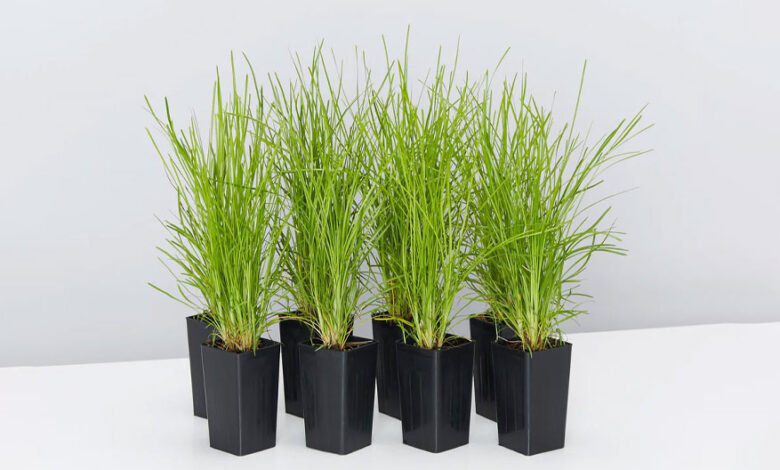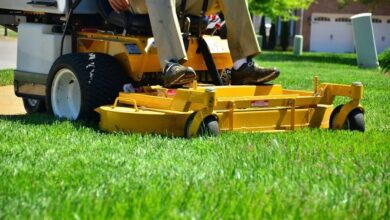The Complete Guide to Growing Lomandra ‘Lime Tuff’

Lomandra ‘Lime Tuff’ has become a beloved ornamental grass for gardens across temperate regions. With its eye-catching lime-green foliage and striking texture, this Australian native adds year-round visual interest along with proven resilience. This comprehensive guide will equip you with the knowledge to incorporate Lomandra ‘Lime Tuff’ into your landscape and nurture it to maturity.
Introduction
Characterized by clumps of stiff, grass-like leaves, Lomandra ‘Lime Tuff’ brings a bold yet graceful element to both residential and commercial spaces. Its versatility allows it to enhance everything from front yards and sidewalk beds to parks and highway medians.
While relatively low-maintenance once established, proper planting and care is key during the first year. This ensures Lomandra ‘Lime Tuff’ develops the extensive root system that enables it to thrive for years to come. With the right growing conditions and attentiveness during establishment, you’ll soon enjoy the vibrancy and allure of mature Lomandra foliage.
Understanding Lomandra ‘Lime Tuff’ Basics
Taxonomy and Origins
Lomandra ‘Lime Tuff’ belongs to the asparagaceae family along with ornamental plants like liriope and hostas. It’s a cultivar of a species called Lomandra confertifolia, which has several varieties. Native across parts of southeastern Australia, Lomandra thrives in coastal and inland regions.
The ‘Lime Tuff’ cultivar offers bolder lime-green foliage compared to the greener hue of the species. It was bred by renowned Australian plant breeder Hedda Wight at the Wirrimbirra Breeding Nursery in New South Wales. Released commercially in 2011, ‘Lime Tuff’ has proven popular thanks to great looks and reliable performance.
Growth Habit and Physical Attributes
‘Lime Tuff’ forms clumps 50-70 cm tall and 60-90 cm wide, with a weeping habit. Its strap-shaped leaves emerge with a reddish tinge before maturing to an eye-catching light green. New foliage continues developing at the base while older leaves gracefully arch toward the perimeter.
During summer, 80cm tall flower spikes arise, each dotted with many tiny cream flowers. These give way to small brown seed pods. The foliage takes on red and orange hues in fall before fading to tan over winter. The evergreen leaves persist for 1-2 years before they are gradually displaced by new growth.
Benefits of Lomandra ‘Lime Tuff’
Environmental Value
As a drought-tolerant Australian native, Lomandra ‘Lime Tuff’ brings resilience along with visual punch. Its extensive root system makes it highly efficient at accessing soil moisture. Once established, it can thrive for months without supplemental irrigation in dry climates.
The fibrous roots also excel at holding soil on slopes and preventing erosion. Lomandra makes an excellent groundcover for embankments and drainage ditches, stabilizing the soil while persisting through tough conditions. These versatile grasses require little upkeep, making them sustainable and cost-effective.
Year-Round Good Looks
The fine texture and glowing color of Lomandra ‘Lime Tuff’ foliage creates intriguing contrast against broader leaves and darker hues. It enlivens mixed borders and looks striking planted en masse as a glowing groundcover.
While many ornamental grasses fade to tan during winter, Lomandra foliage persists with tan coloring yet retains its attractive shape. Even through snow and frigid temperatures, its graceful form and wheat-like seed heads provide subtle beauty.
In warmer zones, the summertime plumes bring airy elegance. The foliar colors shift beautifully from lime green to tipsy fall hues before transitioning to neutral winter tones. This foliage interest lasts all year long.
Optimal Planting Conditions
Analyzing Soils
Lomandra performs best in well-draining soil and adapts to most soil pH levels. Sandy, loamy, or rocky soil is ideal as long as it’s not waterlogged. Clay soils can suffice with addition of organic matter like compost to improve drainage.
Prior to planting, using a soil test kit to determine pH along with nutrient levels provides key insights for amendments. Target slightly acidic to neutral soil in the pH 5.5-7 range. Boost sand content if soil composition is heavy clay.
Sun Requirements
For optimal growth and the brightest lime-hued foliage, plant Lomandra ‘Lime Tuff’ in full sun. This means a minimum of 6 hours of direct sun per day. Light afternoon shade is acceptable, but insufficient sunlight typically results in weaker green coloring.
When and How to Plant
Lomandra does best when planted in spring after the last frost date. Avoid summer planting as extreme heat increases stress for young plants. Early fall planting at least 8 weeks before first frost is also suitable in zones 8-11.
Prepping Soil
About one month before planting, deeply till compost into native soil to enrich nutrition and drainage. Just prior to planting, till Once prior to planting, work in an all-purpose granular fertilizer like 10-10-10 at the recommended rate.
Also consider mycorrhizal fungi products to boost root zone health. Use soil test results to determine if the pH needs adjusting via lime or sulfur application a few weeks before planting.
Spacing and Grouping Basics
- For dramatic mass planting, space Lomandra 12-18” apart on center.
- For refined beds and borders, allow 18-24” between plants.
- Group 3-7 together for greater visual impact.
Step-By-Step Planting
- Dig each hole 2-3 times wider than the root ball and 6” deep.
- Carefully loosen the root system.
- Position in hole with top of root ball level with the soil surface.
- Backfill soil, tamping gently to stabilize.
- Water thoroughly until soil is fully saturated.
- Apply 2-3” of mulch around each plant, avoiding contact with the crown.
Watering Your Lomandra ‘Lime Tuff’
Vigilant watering the first two years is crucial for healthy roots and lush growth long-term. Once established, the watering requirement lessens thanks to the extensive root system’s efficiency.
New Plantings
- Water thoroughly every 7-10 days for the first two months, slowly stretching to every 14 days in year one provided sufficient rainfall.
- Allow soil to partially dry between waterings while avoiding wilt.
- In dry climates, weekly watering may be necessary the first year.
Established Plants
- Monthly deep watering is often adequate in zones 8-11 provided average rainfall.
- During active growth, supplement dry periods with weekly watering.
- Graceful wilting of older foliage is expected during drought but water if extensive.
Prioritize watering in late afternoon or early morning to reduce evaporation loss. Soak the entire root zone thoroughly then allow excess moisture to drain fully.
Fertilizing for Optimal Growth
The best times to fertilize Lomandra are early spring and mid-fall. This fuels vigorous early season growth and strengthens roots going into winter dormancy.
Organic vs. Synthetic Fertilizer
Both organic and synthetic fertilizer can fulfill Lomandra’s needs. Organic options like compost, manure, fish emulsion, and corn gluten meal release nutrients slowly over months. Chemical fertilizers are concentrated for fast uptake but require more precise dosing.
Application Tips
- In spring, apply all-purpose 10-10-10 or 16-6-8 at half strength rate.
- Use slow-release plant foods in mid-fall to support root health.
- Organic mixes ensure gentle yet lasting nutrient supply.
- Avoid high-nitrogen formulas which excessive foliar growth at the expense of roots.
Place dry granules around the base, scratching lightly into soil. For liquid feeds, mix as per label instructions and soak soil thoroughly around drip line. Whether organic or chemical fertilizer, ensure even distribution for robust health.
Pruning Lomandra ‘Lime Tuff’
Minimal pruning is required for Lomandra beyond basic maintenance every few years to revitalize growth. Removing tattered foliage maintains a cleaner appearance.
Flower Stalks
Each summer, elongated flower stalks emerge, wearing many tiny blooms. For a tidy look, prune stalks back to 3” once flowers fade in late summer. However, consider allowing seeds to develop every few years for propagation.
Removing Old Foliage
Every 2-3 years in late winter, prune away older leaves that have browned, tattered, and arched nearly horizontal. Avoid shearing foliage that still shows nice green color. New leaves quickly fill in any gaps.
Disinfect pruning tools before and after use. Collect removed debris and add to compost piles. Such selective renewal pruning improves air circulation and light exposure for an abundance of new growth.
Seasonal Care Tips
Spring Tasks
- Apply broad spectrum fungicide/insecticide to protect new growth.
- Weed vigilantly before invasive plants spread extensively.
- Top-dress mulch to conserve moisture and reduce weeds.
Summer Care
- Deep water during drought to keep roots healthy.
- Stake tall flower stalks if vulnerable to winds.
- Prune back dead flower heads for cleaner look.
Fall Care
- Clear fallen debris to minimize disease issues.
- Fertilize to strengthen roots before winter.
- Plant divisions or young nursery plants.
Winter Considerations
- Water sparingly but avoid desiccation if unseasonably warm.
- Enjoy tan winter form and waving seed heads.
Pests and Diseases
With excellent drainage and air movement within foliage, Lomandra has relatively few issues with pests or disease. Stressed plants can fall victim if growing conditions become subpar.
Potential Problems
- Leaf spot
- Root rot
- Aphids
- Spider mites
Organic Solutions
- Remove and destroy severely infected plants.
- Improve air circulation via selective pruning.
- Disinfect tools after pruning diseased plants.
Chemical Options
- Apply fungicide spray after pruning to protect wounds.
- Spray insecticidal soap or neem oil for bug infestations.
- Let soil rest before replanting to prevent organism spread.
The best defense is proper siting and care to maintain vigor. Ensure plenty of sun, minimal moisture retention, stellar drainage, and good nutrition. Healthy Lomandra rebounds from damage much more robustly than stressed specimens.
Propagating More Lomandra
Once your Lomandra matures, propagating additional plants helps create cohesive designs and share the beauty. Both seed and vegetative division are viable for propagation.
Propagation by Seed
Sow freshly harvested seeds in fall. Cover trays with a thin layer of vermiculite until germination. Transplant seedlings after one year.
Division Method
In early spring, lift mature plants and divide large clumps with a shovel, ensuring each section has ample roots. Replant divisions 15” apart to allow for spreading. Water well and cut foliage back halfway to reduce transpiration stress.
Designing With Lomandra ‘Lime Tuff’
The fine texture and glowing coloration of Lomandra ‘Lime Tuff’ allows it to elegantly contrast broader, darker foliage. It combines beautifully with grasses, sedges, rushes, shrubs, and perennials.
Complementary Elements
- Dark mondo grass
- Blue fescue
- Burgundy cordyline
- Ruby loropetalum
- Golden creeping Jenny
- Purple fountain grass
Garden Bed Design Tips
- Plant en masse as glowing groundcover.
- Edge walkways or accent gravel gardens.
- Mix with blue-hued plants for stunning contrast.
- Allow it to gracefully spill over stone retaining walls.
- Hide declining bulb foliage.
Use Lomandra ‘Lime Tuff’ abundantly across the landscape to unify disparate garden spaces with its color and texture. It works equally well as mass plantings or small accent groupings.
Troubleshooting Care Issues
While Lomandra proves more resilient than many ornamental grasses, attentive care and prompt troubleshooting prevents major issues.
Poor Drainage
Improve drainage via amendments or raised beds to prevent root rot. Provide drainage for potted plants.
Insufficient Sun
Move container plants to maximize sunlight exposure. Prune overhead branches and avoid too much afternoon shade for best golden tones.
Underfeeding
Boost nutrients with balanced organic fertilizer to nurture plant processes for cold resistance and disease defenses.
Overwatering
Allow soil to partially dry out between waterings and reduce irrigation frequency. Test moisture levels with a meter 3-4” deep.
Advanced Care Strategies
Tailoring care to your environment optimizes growth and color. Observe plant responses and fine-tune your practices.
Hot Climates
Site plants to catch morning sun with afternoon filtered shade. Mulch to conserve soil moisture and reduce watering demand.
Cool Regions
Select sheltered microclimates and allow plants to receive day-long light. Avoid poorly drained sites prone to soggy soil through winter.
Windy Areas
Group plants together as larger drifts rather than solitary specimens. Position away from unimpeded wind tunnels.
Urban Settings
Provide supplemental irrigation during heat waves where rainwater is insufficient. Check soil pH where tree roots or pollution causes imbalances.
Inspiring Lomandra Landscapes
Schoolyard Transformation
A California school sought to renovate their struggling lawn area with sustainable, drought-resistant landscaping. The designers utilized mass plantings of Lomandra ‘Lime Tuff’ as flowing green groundcover around stepping stone paths and gathering areas. Repeated blocks of Lomandra unify the space with color and texture for low-maintenance beauty.
Highway Medians
Along a Florida highway interchange subject to heat, poor soil, and pollution, landscape crews required resilient planting options. Hundreds of Lomandra ‘Lime Tuff’ were installed along the roadway margins. With no supplemental irrigation provided their first year, the Lomandra thrived with excellent vigor and retention, testifying to the toughness of this versatile grass.
Conclusion
With airy elegance and luminous, finely textured foliage that maintains year-round interest, Lomandra ‘Lime Tuff’ deserves inclusion in both small-scale and public landscaping. Proven resilient once established, a bit of patience and attentive care in its first seasons will reward you with glowing presence for years to come. Experiment with Lomandra ‘Lime Tuff’ as edging, grouping clusters and flowing groundcover across your garden.




